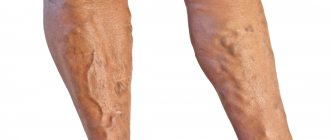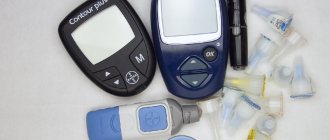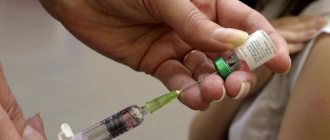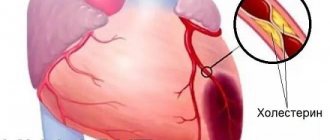Symptoms of heart attack in women and pregnant women
Heart attack symptoms in women are gradually becoming more frequent.
And if the attack lasts more than 15 minutes and does not subside, it is necessary to call an emergency ambulance. The consequences and complications can be unpredictable, even death, because this is most likely a myocardial infarction. Symptoms in women include the following:
- sharp, sudden burning pain in the area of the heart, chest on the left, near the shoulder blades;
- tingling of the arm up to the elbow and hand;
- attack of heaviness in the stomach;
- periodic numbness of the back of the head, turning into an unpleasant pain syndrome in the facial part and even in the teeth;
- drop in blood pressure;
- dizziness, loss of consciousness;
- shortness of breath can be caused by any movement;
- profuse secretion of sticky sweat;
- slurred speech;
- impaired coordination of movements;
- panic attacks;
- blurred vision;
- rapid pulse;
- surges in blood pressure.
This is how a heart attack manifests itself in women.
All these signs indicate the gradual death of myocardial cells, insufficient supply of nutrients and oxygen to the heart, and disruption of proper blood circulation. In such cases, first aid must be provided before doctors arrive. If there is a strong lack of air, you need to open the window and loosen your clothes, choose the most comfortable position for the patient, and give Nitroglycerin and Aspirin. Be sure to maintain calm and silence all this time and do not panic. The most wonderful period of every woman’s life can be overshadowed by the onset of coronary heart disease. This is an uncommon occurrence, but after 40 years of age the likelihood increases during pregnancy. There may be various reasons for the occurrence of a disease such as myocardial infarction; the symptoms of women during pregnancy will be the same as those of an ordinary woman.
But there are many reasons for this:
- emotional stress;
- heredity;
- arrhythmia;
- increased blood clotting;
- coronary embolism;
- chronic or acquired disorders of the kidneys and heart.
Age should not be ruled out either. The vessels wear out, their walls become thinner and the load on the coronary arteries increases. During pregnancy, fetal pressure occurs on the lower limbs, which also disrupts proper blood circulation. Coronary artery disease can manifest itself in the form of shortness of breath, frequent urination, pain in the left side of the body, numbness in the arm, and tingling in the upper abdomen. Accompanied by dizziness and migraines. During sleep, temporary cessation of breathing and involuntary snoring often occur. If similar symptoms of a heart attack are observed in women, the patient is hospitalized for further examination, treatment and stay in the hospital.
Heart attack - symptoms
The main symptom of myocardial infarction in men and women is severe chest pain. The pain is so severe that the patient's will is completely paralyzed. A person has the thought of imminent death.
The first signs of a heart attack:
- Stitching pain behind the chest is one of the first signs of a heart attack. This pain is very sharp and resembles a knife blow. Can last more than 30 minutes, sometimes for hours. The pain can radiate to the neck, arm, back and shoulder blade area. It can also be not only constant, but also intermittent.
- Fear of death. This unpleasant sensation is actually not such a bad sign, as it indicates the normal tone of the central nervous system.
- Shortness of breath, pallor, fainting. Symptoms occur because the heart is unable to push blood vigorously enough to the lungs, where it is oxygenated. The brain tries to compensate for this by sending signals that increase breathing.
- Another important hallmark of myocardial infarction is the lack of reduction or cessation of pain at rest or when taking nitroglycerin (even repeatedly).
The disease does not always manifest itself in such a classic picture. Atypical symptoms of myocardial infarction may also be observed, for example, instead of chest pain, a person may feel simple discomfort and interruptions in the functioning of the heart, there may be no pain at all, but there may be abdominal pain and difficulty breathing (shortness of breath) - this picture is atypical, it is especially difficult in diagnostics.
The main differences between pain during myocardial infarction and angina are:
- severe intensity of pain;
- duration more than 15 minutes;
- the pain does not stop after taking nitroglycerin.
Possible complications
With the right approach to treatment, the prognosis is favorable. Out of 100% of people, 85% recover. In 10% of cases, a heart attack occurs, and in 5%, cardiac death occurs. The medications are effective and give good results - 75% of 100 people got rid of the condition. The rest required surgical treatment.
If a patient has a heart attack, you need to prepare for possible complications:
| Name | Description |
| Cardiogenic shock | It is considered a serious condition. The risk of occurrence increases if the patient has diabetes or a recurrent heart attack. In 20% of cases, the result of shock is death. The main reason is loss of time. Many people do not notice the symptoms, although the condition is treatable. But then it becomes too late |
| Mitral regurgitation | Occurs often, medications or surgery are used |
| Heartbreak | The worst complication of them all. The condition cannot be treated. The complication is especially dangerous for women, because their heart cannot withstand the heavy load or lack of therapy, and a rupture occurs |
| Thromboembolism | There is a risk of blood clots even after surgery, and especially in the first 5 days. For prevention purposes, Heparin is administered. And on the second day they give Warfarin |
| Post-infarction | The body responds with this reaction to cell necrosis. Treatment requires the use of drugs with hormonal composition |
The main sign of pre-heart attack in women is chest pain. Additional symptoms include shortness of breath at rest, tachycardia and others. It is important to recognize a pre-infarction condition and visit a doctor. If the signs appear acutely, you need to call an ambulance. In the absence of disease, pay attention to prevention.
Prevention
Prevention of the pre-infarction state is of particular importance, because if you do not follow the doctor’s recommendations, the condition will recur and will probably get worse.
Prevention is doubly necessary for those who have once suffered a heart attack, since the likelihood of death increases several times if it occurs again.
In order to maintain your body in normal condition, you must follow the following rules:
- Regular intake of vascular and cardiac medications, as prescribed by the doctor. Violation of recommendations, overdose or refusal to take it can lead to death.
- Controlling blood pressure and cholesterol levels.
- Diet. Refusal of fried, fatty, salty foods. Ban on overeating. It is best to consume more vegetables and fruits. It is best to steam food and use lean meat. It is also recommended to avoid coffee, carbonated drinks, and strong tea.
- Balance between work and rest, avoiding overwork. Moderate loads, avoiding nervous strain. You can engage in therapeutic physical training. Have a healthy sleep in a ventilated room.
- Visit to a specialist. It is advisable to visit the hospital from time to time and undergo all the necessary tests in order to identify pathological disorders in the early stages and begin treatment.
- Avoiding stress and nervous tension.
It is important to remember that all these measures do not provide a 100% guarantee that a person will no longer encounter diseases. But only following these rules, visiting a doctor and following his recommendations significantly reduces the likelihood of a recurrence of a pre-infarction condition or death.
The essence of pathology
Pre-infarction condition or unstable angina is a dysfunction of the myocardium of the heart as a result of increasing narrowing of the coronary arteries and a gradual deterioration in the blood supply to the heart muscle. Sometimes this condition is assessed as the period of precursors of a heart attack or the initial prodromal period of a heart attack. However, statistics show that not all manifestations of a pre-infarction state develop into a full-fledged myocardial infarction, and the duration of the period can reach weeks or even months.
Return to contents
When to see a doctor
Pre-infarction (symptoms in women include pain in the chest) requires a visit to the doctor. In case of acute symptoms, help is needed immediately. It is necessary to call an ambulance or accompany the patient.
If the first option is chosen, before the team arrives, the person’s condition should be alleviated:
Lay down or sit down. Provide air - open the windows, unbutton the collar, loosen the tie. Give the drug Nitroglycerin (under the tongue). Keep the tablet in your mouth until completely dissolved. The medication is taken when symptoms appear or before physical activity or stress. Dosage at a time – 1 tablet. In most patients, the situation improves within 3 minutes. If after 5 min. the attack does not go away, you can take 1 more tablet. But, if there is no effect, you need to wait for an ambulance. If there are no Nitroglycerin tablets, you can use the spray of the same name for internal use. You need to apply it under the tongue while sitting. The patient must hold his breath before use. After application, do not swallow the spray immediately, but after a few seconds. 1 - 2 doses of spray are enough. If necessary, 1 more dose may be administered, but the total amount should be no more than 3 in 15 minutes. If the condition worsens after 3 injections, the drug cannot be used anymore, you should consult a doctor as soon as possible. Give a painkiller. Required for severe pain. If the patient has previously taken Nitroglycerin or another drug, you need to study the instructions
Pay special attention to the point “interaction with other drugs”. Nurofen, Ibuprofen, Analgin and others can be used as painkillers.
It is better to take medications in capsules, they act faster and the effect is noticeable within 5 to 10 minutes.
Medicines can cause side effects, so if a person does not know for sure about an allergic reaction to a substance, it is better to use the medications that the patient takes in everyday life. For example, for pain, the doctor recommends taking Nurofen or Ibuprofen, since there is no allergy to it.
A cardiologist deals with pre-infarction conditions. In severe cases, the diagnosis is made by an ambulance, and then the patient is transported to the desired facility. For example, a cardiology center. If the symptoms are not complicated, you can go to the clinic to see a therapist. He will write a referral to a cardiologist.
Is it possible to help at home?
You can’t do anything on your own; it’s impossible to distinguish between heart pain and cardiac pathologies without special methods. It is necessary to call an ambulance.
The algorithm before the doctors arrive is as follows:
- Take a Nitroglycerin tablet. If there is no effect, take another one after 10-15 minutes.
- Open the window, window. Provide ventilation in the room.
- Sit down, move less. Do not lie down, your condition may worsen.
- Calm down. Emotional manifestations provoke the release of cortisol and adrenaline. An increase in blood pressure will have an even worse effect on a person’s general condition.
You can't wash your face or eat. Loss of consciousness, vomiting and death from asphyxia are possible. Upon arrival of doctors, tell about your health, briefly and clearly.
You should not refuse offers of hospitalization. This is in the interests of the person himself. It is necessary to prevent the development of a heart attack by all means.
Secret pre-infarction condition - silent ischemia
There is a fairly large group of patients about whom everyone knows that they have angina. They avoid exercise, always have validol or nitroglycerin with them, and attacks of myocardial ischemia manifest themselves with chest pain. But there is another group. Everything is different there. It becomes bad, weakness, dizziness, sweating, shortness of breath occur. An ambulance is called, which immediately diagnoses a heart attack.
It is these patients who suffer from a painless form of myocardial ischemia, and this fact completely buries the “pre-infarction state” as a supposedly medical term, especially since the pressure in the pre-infarction state can be normal or slightly elevated.
Who is at high risk for asymptomatic angina? First of all, these are patients with long-term diabetes mellitus. The sensitivity of their nerve endings changes, and just as they do not feel pain and touch on their feet, they also do not feel how an attack of angina occurs. Therefore, such patients may have several scars indicating an old heart attack that happened several times, and sometimes the result is sudden coronary death. The diagnosis of severe and extensive infarction in patients 40 years of age and younger is becoming common, especially against the background of malignant hereditary hyperlipidemia or severe type 1 diabetes mellitus.
Morning suffering, or spontaneous variable angina
Symptoms of a pre-infarction condition in women occur not only after physical activity, or at its peak. In some cases, this happens without any provocation, and not only suddenly, but also when the person cannot understand anything and does not take any action. We are talking about nighttime or morning episodes of coronary artery spasm. It is impossible to recognize a pre-infarction condition that occurs during sleep.
Most often, intense pain in the heart occurs between 4 and 6 a.m., which coincides with the REM sleep phase, when the tone of the sympathetic nervous system increases and blood pressure increases slightly. Against this background, a strong pain attack appears, and the night before everything was usually as usual, and blood pressure did not cause any concern. An attack of spontaneous angina (also called Prinzmetal angina) is characterized by the following symptoms:
- The pain occurs where it should be - behind the sternum, with irradiation under the left shoulder blade, sometimes the shoulder, less often - completely into the left arm, up to the hand;
- The duration of the attack (which is usually very pronounced) ranges from 5 minutes to half an hour;
- Against the background of pain, bradycardia, or slow heart rate, occurs;
- The pain syndrome is accompanied by shortness of breath, weakness, perspiration, turning into cold sweat;
- Dizziness often occurs. This is an unfavorable sign. After all, it has nothing to do with ordinary, vestibular vertigo, which neurologists, gerontologists and therapists deal with. This is a symptom of decreased contractile function of the left ventricle, which is fraught with the development of acute cerebral circulatory failure (stroke) or transient ischemic attack (tia);
- Sometimes, against the background of a painful attack, various heart rhythm disturbances occur, which can be fatal and lead to death.
Pathogenesis
The prodromal period, a precursor to the development of myocardial infarction, lasts from several minutes to several days, and various symptoms can occur at different periods separately. The absence of trophism, its deterioration due to impaired blood flow due to narrowing (stenosis) or blockage of the coronary vessels lead to ischemia and tissue necrosis, ventricular fibrillation. As a result, acute coronary insufficiency is observed, provoked by a violation of oxidative processes in the myocardium, in addition, there is an excessive accumulation of under-oxidized metabolic products, including lactic, pyruvic, carbonic, phosphoric acid, etc.
A heart attack can even begin suddenly, for no apparent reason - exercise or stress. It does not go away even after rest; the patient still experiences compressive pain in the chest. This condition can lead to loss of consciousness and even cardiac arrest.
Diagnostics
When diagnosing a heart attack, much attention is paid to the patient’s complaints and clinical symptoms. Within 1.5 hours from the onset of a painful attack, motor excitation is observed, then retardation sets in. Noticeable pallor of the skin, protruding sweat, blueness of the lips, fingertips, coldness of the extremities
Pallor of the skin, protruding sweat, blueness of the lips, fingertips, and coldness of the extremities are noticeable.
On the second day, a friction noise of the pericardial leaves may occur, which indicates the addition of aseptic pericarditis. Diagnostics is carried out using the following methods:
Laboratory methods
The most specific sign of cardiac muscle necrosis is an increase in the levels of troponins I and T. The troponin test helps diagnose the disease even before changes appear on the ECG.
Instrumental methods
- That ST is several mm relative to the isoline, a Q wave appears (pathological), the R wave disappears, various conduction and rhythm disturbances are observed (blockades, arrhythmia, extrasystole). Depending on which leads there are changes, the localization of the infarction can be assumed.
- Echocardiography: ultrasound of the heart can identify affected areas of the myocardium, signs of ventricular dilatation, determine the presence of an aneurysm, assess the degree of contractility impairment and other indicators of cardiac activity.
- Chest X-ray: This is used to diagnose pulmonary edema, pneumonia, and other complications of myocardial infarction.
- Coronary angiography: necessary if surgical treatment of the disease is intended. This study allows you to determine which of the coronary arteries are affected.
Pre-infarction condition in men and women: symptoms and signs
Pre-infarction is characterized by its own symptoms and first signs. Its manifestation is associated with an advanced form of angina pectoris against the background of progressive cardiac ischemia. The main reason for the development of the pathological process is the blockage of blood vessels with atherosclerotic plaques.
If treatment was ineffective or was not carried out at all, then the patient will experience myocardial infarction with its characteristic necrosis of heart tissue. If irritating factors are excluded, there is a possibility of spontaneous elimination of symptoms and improvement of the condition.
A characteristic sign of a pre-infarction condition is increasing pain in the heart. It can radiate to the face, collarbone, upper extremities, and right half of the chest. The attack is accompanied by an uncontrollable fear of death, nausea, rapid heartbeat, anxiety, suffocation and increased blood pressure. Symptoms become more pronounced when receiving physical activity.
In addition to typical manifestations, there are also atypical ones. They can confuse the patient, since it is extremely problematic to determine the pre-infarction state without pain or when it is localized in the stomach area. A general list of such symptoms is as follows:
- sleep problems;
- no pain attack;
- increasing weakness;
- aching pain in the lower jaw area;
- groundless irritability;
- blue discoloration of the skin;
- attacks of dizziness;
- burning and pain in the epigastric area;
- manifestation of shortness of breath at rest.
There have been cases of localized back pain radiating to the shoulder area.
Patients are prescribed x-rays instead of the electrocardiogram required to determine a heart attack. Well-known TV presenter Elena Malysheva also highlighted situations where people confuse a pre-heart attack condition with heartburn. A person spends time treating the stomach without realizing the true causative factor. Symptoms of a pre-infarction condition in women may appear much less pronounced, which is due to an increased pain threshold. Instead of an obvious pain attack, they often notice only a tingling sensation. Dizziness and shortness of breath are usually attributed to fatigue.
Manifestation of pathology
Pre-infarction syndrome is determined by the presence of an unstable form of angina, i.e. it is not considered angina pectoris, which is chronic and stable, manifesting itself with a certain periodicity. Taking into account this attitude to pathology, the following main forms of pre-infarction state are distinguished:
- Angina pectoris, which appeared for the first time.
- Progressive angina pectoris: changes in the characteristics of previously occurring angina pectoris in terms of increasing the frequency of attacks, their intensity and duration, the appearance of pain syndromes with a different localization, the manifestation of irradiation of pain.
- The appearance of angina at rest in addition to a pre-existing stress pathology;
- Angina after large artery bypass surgery.
- Princetal's angina: appears as a result of spasm in the coronary arteries, characterized by attacks in the morning.
Return to contents
What to do if signs are detected and what is the prevention of the disease
If you do not consult a doctor when the first signs of a pre-infarction condition appear, it will end in a myocardial infarction. That is why, if you have the slightest suspicion, you should visit a cardiologist.
Diagnosis of this disease comes down to examining the patient by a doctor and conducting an ECG, which will subsequently be interpreted by a cardiologist. After this, the patient is usually admitted to a hospital, usually an intensive care unit. Treatment consists of taking special medications. Also, the patient will be provided with complete peace, silence and a gentle diet, which will have a minimum cholesterol content.
The patient should also independently monitor their blood pressure. You should avoid heavy stress, emotional and physical, try to stick to proper nutrition and get enough sleep.
Those who have pathologies of the cardiovascular system should closely monitor their condition and be constantly monitored by a doctor. For everyone who is at risk of developing a pre-infarction condition, there are special preventive recommendations to avoid the occurrence of a pre-infarction condition. Among them:
- taking medications for the cardiovascular system that should be prescribed by a doctor;
- regular blood pressure monitoring;
- proper nutrition and monitoring cholesterol levels;
- rejection of bad habits;
- maintaining an active and healthy lifestyle;
- Observe proper rest and sleep patterns.
By adhering to these recommendations, you can significantly reduce the risk of a pre-infarction condition.
Causes
The occurrence of a pre-infarction state is facilitated by:
- general disorders of the circulatory system caused by heart failure, which lead to blood stagnation, accumulation of large amounts of carbon dioxide, tissue hypoxia, acidosis, changes in blood pressure, heart rate;
- atherosclerosis of the arteries and other diseases that cause thickening of the intima of the arteries;
- embolism - blockage of blood vessels by gas bubbles or foreign particles - emboli, which are brought with the bloodstream;
- thrombosis - disruption of normal blood flow formed by blood clots;
- arterial spasms - pathological narrowings caused by excessively intense or prolonged muscle contractions;
- arteritis – inflammation of the artery walls due to infections or autoimmune reactions;
- heart injuries - most often blunt, lead to contusion of the myocardial muscles, rupture of the heart chambers and septa, damage to the valves;
- violation of the rheological properties of blood, for example, increased viscosity and aggregation of red blood cells;
- hyperlipoproteinemia - an increase in the concentration of lipids and lipoproteins in the bloodstream, a common cause of problems with the cardiovascular system;
- hypertension leads to constant tension of the vascular walls, which can cause their thickening, impaired elasticity and trophism;
- hypothermia;
- overdose of medications.
Possible causes of pre-infarction condition
Acute phase symptoms
In the acute phase of a heart attack, men are characterized by a classic version of the course with acute severe pain in the chest, shortness of breath, a feeling of lack of air, disorientation, and increased heart rate. These symptoms develop at rest, without physical activity. Pain during a heart attack is long-lasting, from 15 minutes to a day, and can be wave-like.
Distinctive symptoms of a heart attack in a man may include:
- “tie” pain, a burning sensation behind the sternum;
- compression of the chest cavity (men describe this as if an elephant is sitting on the chest and shoulders);
- pain behind the sternum, spreading to the right side, occurs 5 times more often in men;
- pain in the biceps, left shoulder, left arm, that is, moving to the upper belt;
- the gastralgic version of the heart attack is 3.7 times more common in men - abdominal pain, nausea, heartburn, bloating. Vomiting is more common in women (3.9 times more);
- dyspnea;
- cold sweat;
- cyanosis, pallor of the skin, complexion becomes gray and sallow;
- numbness, tingling sensation in the extremities, which may indicate peripheral vasospasm;
- anxiety, fear of death, panic;
- feeling of a sinking heart;
- increased blood pressure during the first day of a heart attack in patients without a history of hypertension;
- Rare symptoms may include a dry cough, fever, or unexplained skin rash.
Such differences are explained by the structural features of the body: in men, the heart is larger and located more centrally. In women, the heart is smaller, located lower, to the left.
In men, large arteries are more often clogged; the affected area is better visualized during angiography.
Before the development of a heart attack, men are more examined and are diagnosed with ischemic disease 5 times more often.
Female heart attacks are characterized by damage to small vessels, which is often not noticeable on an angiogram and leads to late diagnosis; most symptoms are regarded as false positive.
Atypical forms of myocardial infarction are also more common in women. This leads to a higher incidence of deaths among women.
A painless type of heart attack (“silent”) occurs in both sexes; signs of the condition suffered “on the legs” may include pulmonary edema, arrhythmias, and sudden hypotension (lowering blood pressure). This option is typical for patients with diabetes.
Pre-infarction condition: symptoms
When considering the pre-infarction state, it should be noted that it is characterized by the development of angina pectoris on a progressive scale, which, moreover, is in its own advanced stage. After some time, with inadequate or incomplete treatment, as well as under the influence of stress and other types of complications, angina pectoris can progress directly to myocardial infarction. Often it also stops on its own, which, accordingly, allows the patient to recover.
A progressive pre-infarction condition is characterized by increased pain in the chest, an additional symptom is increased pressure.
The condition is characterized, as we have already noted, by an extremely pronounced pain syndrome, which in particular consists of pain in the area behind the sternum, in addition, this pain is similar to the pain that occurs during exertional angina. Meanwhile, if the manifestation of pain during angina pectoris can be eliminated by taking nitroglycerin, then in the pre-infarction state, nitroglycerin does not eliminate pain, and the number of attacks that occur throughout the day only increases. In some cases, their number can reach three dozen, which, in turn, leads to gradual necrosis in a specific area of the heart muscle.
The pain accompanying the pre-infarction condition radiates under the collarbones and into the sublingual region, into the right side of the sternum and into the arms. Cold sweat forms, the patient experiences severe anxiety, agitation, heartbeat increases, in addition, he also experiences fear of death. Often these conditions are accompanied by nausea and suffocation.
The course of the pre-infarction state is also possible on an atypical scale. Thus, the patient complains of dizziness and severe weakness, sleep disturbances and insomnia occur. There is no pain syndrome in the atypical course. The course of this pathology in this form provokes the occurrence of shortness of breath and cyanosis, which occur without any predisposing reasons and when at rest. Diagnosis is possible only with the help of an electrocardiogram, which will indicate the formation of blockades in the patient, as well as decompensation in the blood circulation, paroxysmal tachycardia and extrasystole. A predominantly atypical picture of pre-infarction conditions in this course is observed among elderly people aged 79-90 years.
In certain cases, abdominal syndrome occurs, in which the localization of pain is concentrated in the left hypochondrium, as well as in the upper abdomen. The patient experiences a characteristic burning sensation in the epigastric region; as for the pain, it can be cutting, stabbing or aching in nature. Strengthening is observed during physical activity of one type or another, as well as during stressful situations, experiences and when walking. Being at rest can eliminate painful manifestations, which is also possible when taking nitrates for this purpose.
This condition may be accompanied by nausea and vomiting, abdominal pain, hiccups, and flatulence. In some cases, pain occurs in the neck, throat, or lower jaw area. There are also cases in which only shortness of breath or disturbances in the rhythms of the heart are noted. In the cerebrovascular form of the pre-infarction state, fainting, dizziness and nausea are possible.
What forms of such a violation exist?
Depending on the existing disorder, the following predisposing forms of pre-infarction condition can be distinguished:
- Angina pectoris is progressive. The pathology will progress if there is a past history of angina attacks. At the same time, heart pain is prolonged and severe.
- Angina after bypass surgery. It develops as a result of surgery to remove atherosclerotic plaques that cause narrowing of the walls of blood vessels.
- Angina at rest. It is characterized by pain after intense physical activity.
- Prinzmetal angina. It occurs if spasms of the coronary artery are observed, it is severe and most often appears in the morning.
Depending on the progression of this condition, symptoms are also identified that make it clear about the existing disorder.
Diagnostics
If you have symptoms resembling myocardial infarction, you should call an ambulance. A patient with a heart attack is treated by a cardiologist, who also provides rehabilitation and follow-up care after the illness. If stenting or bypass surgery is necessary, it is performed by a cardiac surgeon.
When examining the patient, pallor of the skin, signs of sweating are noticeable, and cyanosis (cyanosis) is possible.
A lot of information will be provided by such methods of objective research as palpation (feeling) and auscultation (listening). So, with palpation you can identify:
- Pulsation in the area of the cardiac apex, precordial zone;
- Increased heart rate to 90 - 100 beats per minute.
After the ambulance arrives, the patient, as a rule, undergoes an urgent electrocardiogram, according to the readings of which the development of a heart attack can be determined. At the same time, doctors collect anamnesis, analyzing the time of onset of the attack, its duration, pain intensity, its localization, irradiation, etc.
In addition, acutely occurring bundle branch block may be indirect signs of the development of a heart attack. Also, the diagnosis of myocardial infarction is based on the detection of markers of damage to the muscle tissue of the heart.
Troponin levels may rise sharply in the first five hours after a heart attack and may remain elevated for up to twelve days. In addition, to detect the pathology in question, doctors can prescribe echocardiography.
The most important diagnostic signs of myocardial infarction are the following:
- prolonged pain syndrome (more than 30 minutes), which is not relieved by nitroglycerin;
- characteristic changes in the electrocardiogram;
- changes in the general blood test: increased ESR, leukocytosis;
- deviation from the norm of biochemical parameters (appearance of C-reactive protein, increased levels of fibrinogen, sialic acids);
- the presence in the blood of markers of myocardial cell death (CPK, LDH, troponin).
Differential diagnosis of the typical form of the disease does not present any difficulties.












